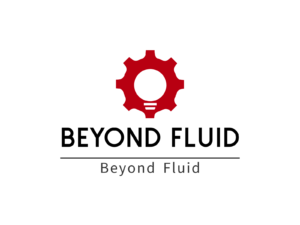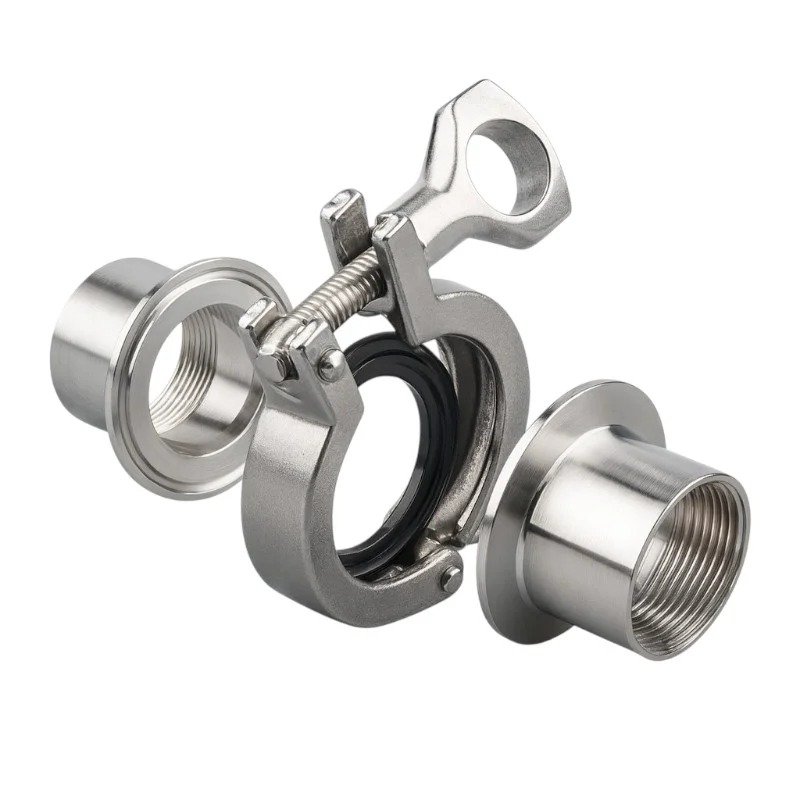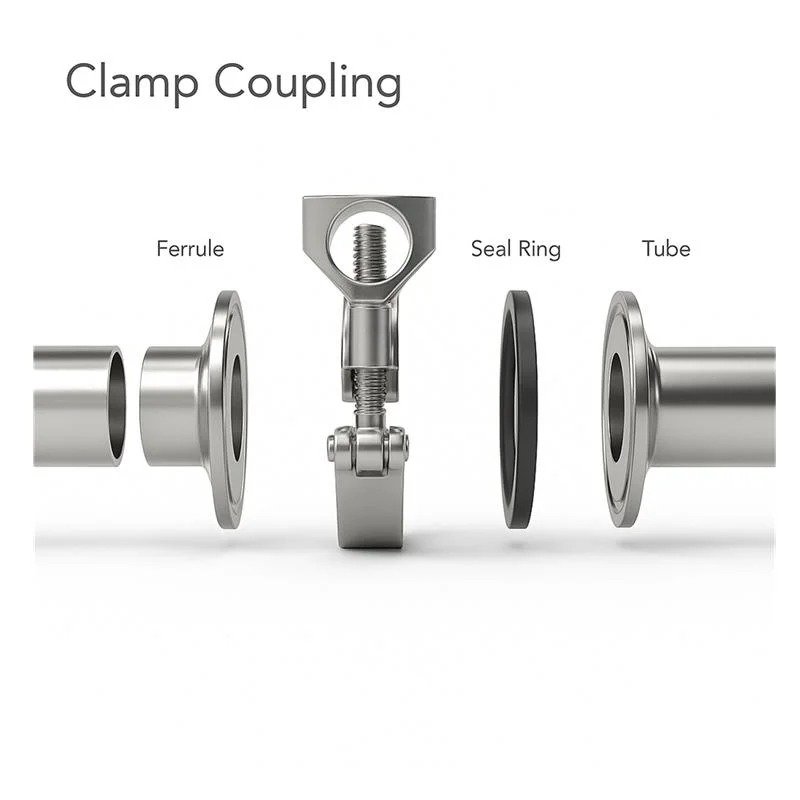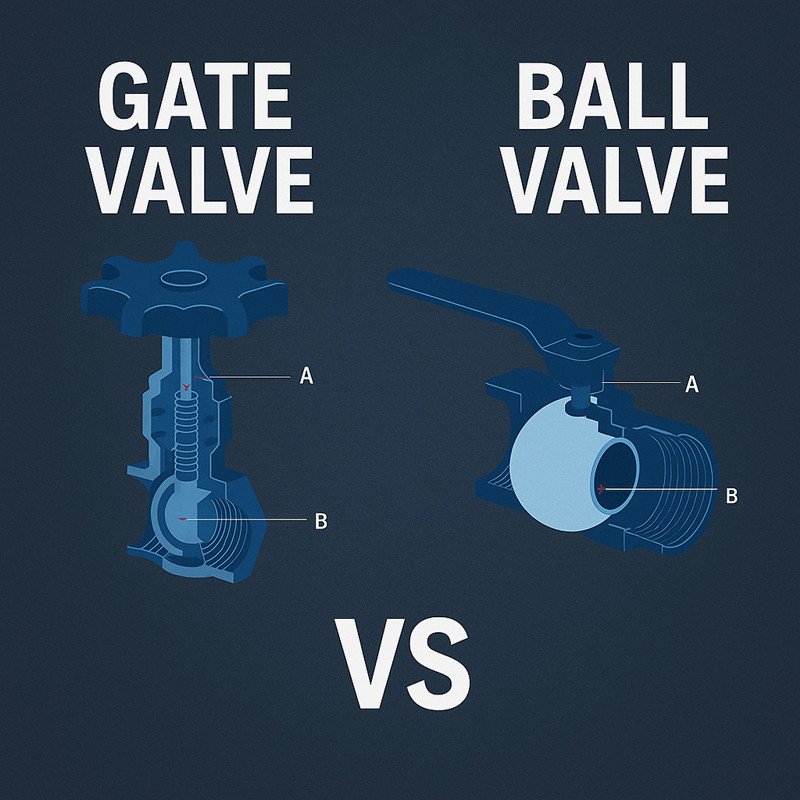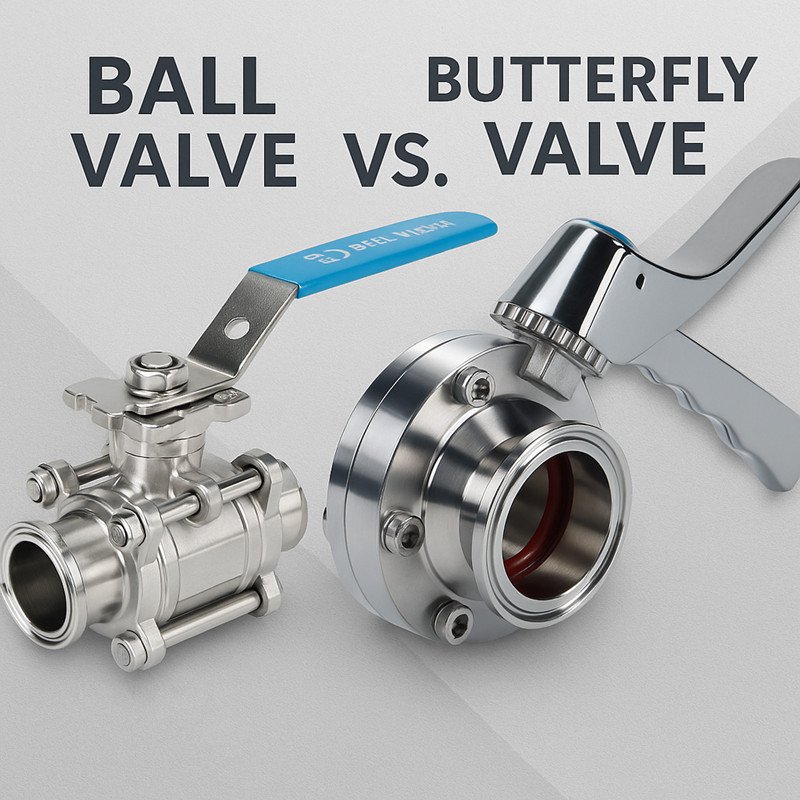
Sanitary ball valves play a crucial role in industries where hygiene is paramount. Without them, contamination risks increase, leading to product quality issues and safety concerns.
Sanitary ball valves are specialized valves designed for use in hygienic applications, ensuring safe and contamination-free flow control in industries such as food, pharmaceuticals, and dairy.
Understanding their design, functionality, and applications will help businesses make informed purchasing decisions.
Definition of Sanitary Ball Valves
Sanitary ball valves differ from standard ball valves due to their focus on hygiene and ease of cleaning. They are constructed using materials and designs that prevent contamination.
Sanitary ball valves are flow control devices with a rotating ball inside, ensuring smooth and unobstructed flow while maintaining hygienic conditions.

Importance in Sanitary Processing Systems
These valves are essential in industries where cleanliness1 is crucial. They minimize dead spaces where bacteria can accumulate and are easy to clean, ensuring product integrity2.
Industries such as pharmaceuticals and food processing rely on sanitary ball valves to maintain safety standards and comply with strict regulations.
Design and Construction
Sanitary ball valves are specifically designed to meet hygienic standards. Their construction materials and components ensure durability and cleanliness.
Detailed Description of Components
Sanitary ball valves typically consist of:
- Valve Body – The main structure, usually stainless steel.
- Ball – A polished sphere that controls flow.
- Seats and Seals – Made of PTFE or other FDA-approved materials.
- Actuation Mechanism – Can be manual or automated.
Materials Used and Their Suitability
Sanitary ball valves are commonly made from:
| Material | Properties | Applications |
|---|---|---|
| Stainless Steel (304/316) | Corrosion-resistant, durable | Food, pharmaceuticals, dairy |
| PTFE | High chemical resistance | Seals and seats |
| EPDM | Flexible and FDA-compliant | Gaskets in dairy processing |
Comparison with Other Valve Types
| Valve Type | Features | Best Use Cases |
|---|---|---|
| Ball Valve | Full bore, low pressure drop | Clean applications requiring minimal obstruction |
| Butterfly Valve | Compact, cost-effective | Low-pressure applications |
| Diaphragm Valve | High precision, good throttling | Pharmaceutical and biotech |
Operating Principles
Sanitary ball valves operate by rotating a ball inside the valve body to control flow. The simple design allows for quick shutoff and reliable sealing.
Mechanism of Action
- The ball has a bore (hole) through its center.
- When aligned with the pipeline, fluid flows freely.
- A 90-degree turn blocks flow completely.
Flow Control Capabilities
Sanitary ball valves offer:
- Full bore design for unobstructed flow
- Minimal pressure drop
- Quick shutoff function
Pressure Ratings and Limitations
Sanitary ball valves generally operate within moderate pressure ranges. Their limitations include:
- Not ideal for high-pressure steam applications
- Limited throttling capability
Applications in Various Industries
Sanitary ball valves are widely used across multiple industries where cleanliness and precision are essential.

Pharmaceuticals
- Used in sterile liquid transfer processes
- Prevents contamination and maintains compliance
Food and Beverage
- Ideal for controlling fluid flow in production lines
- Meets strict hygiene standards
Dairy
- Ensures safe milk and cheese production
- Minimizes bacterial growth risks
Personal Care Products
- Used in cosmetics and skincare manufacturing
- Prevents product contamination
Advantages
Sanitary ball valves offer several benefits over other valve types.
High-Pressure Handling
- Suitable for moderate to high-pressure systems
- Maintains reliable flow control
Reliable Shutoff Capabilities
- Ensures tight sealing to prevent leaks
- Reduces contamination risks
Compatibility with Automation Systems
- Can be integrated with pneumatic or electric actuators
- Improves process efficiency
Disadvantages
Despite their advantages, sanitary ball valves have some limitations.
Challenges in Cleaning and Maintenance
- Requires regular cleaning to prevent residue buildup
- May need disassembly for thorough sanitation
Potential for Product Buildup in Cavities
- Some designs may trap product in crevices
- Requires proper selection of cavity-filled designs
Not Ideal for Throttling Applications
- Designed primarily for on/off control
- Less effective for precise flow regulation
Maintenance and Cleaning Procedures
Proper maintenance ensures long-term performance and hygiene.
Best Practices for Ensuring Hygiene
- Use CIP (Clean-in-Place) or SIP (Sterilize-in-Place) methods
- Flush with appropriate cleaning agents
Disassembly and Reassembly Guidelines
- Follow manufacturer instructions for disassembly
- Inspect seals and replace if necessary
Inspection and Troubleshooting Tips
| Issue | Cause | Solution |
|---|---|---|
| Leakage | Worn seals | Replace seals |
| Difficult operation | Residue buildup | Clean valve thoroughly |
| Poor sealing | Misalignment | Reassemble correctly |
Recent Innovations and Trends
Sanitary ball valves continue to evolve with modern industry demands.
Advancements in Valve Design
- Self-draining designs to prevent contamination
- Cavity-filled ball valves for enhanced hygiene
Integration with Modern Automation Technologies
- Smart sensors for real-time monitoring
- Remote operation through IoT connectivity
Emerging Materials Enhancing Performance
- Improved polymer seals for higher temperature resistance
- Coated stainless steel for better corrosion protection
Case Studies
Real-World Examples of Sanitary Ball Valve Applications
Pharmaceutical Industry: A major pharmaceutical company adopted automated sanitary ball valves to improve sterile fluid transfer, reducing contamination risks by 40%.
Food Processing: A beverage manufacturer integrated sanitary ball valves in their CIP system, leading to 30% faster cleaning times and increased production efficiency.
Lessons Learned and Best Practices
- Regular maintenance extends valve lifespan
- Choosing the right material prevents corrosion issues
- Automation enhances efficiency and reduces human error
Conclusion
Sanitary ball valves are essential in hygiene-critical industries, offering reliable flow control and easy cleaning. As technology advances, their efficiency and performance continue to improve, making them a preferred choice for manufacturers worldwide.

